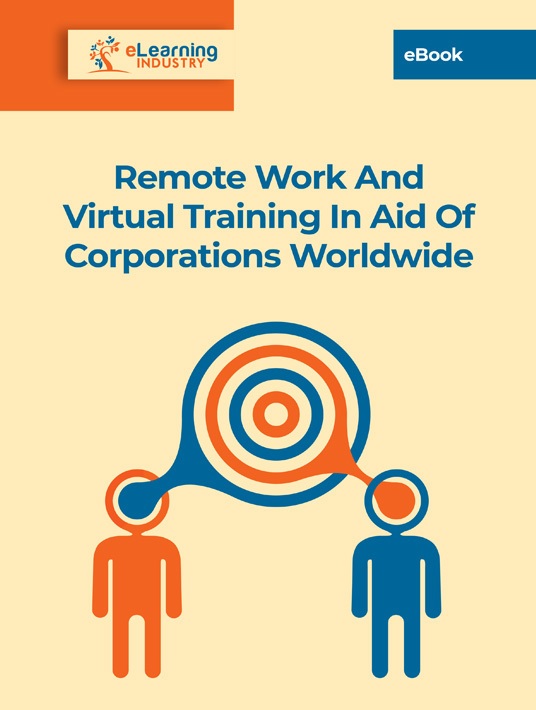Encourage Skill-Building For Your Working-From-Home Employees
As the old saying goes, "if you don’t use it, you lose it." Knowledge and skills slowly fade without regular reinforcement. This is why it’s essential to put your talents into practice and continually expand your L&D horizons. How do you accomplish this while working from home? Live events, JIT support, and interactive online training activities are a great start. Below are 8 top-notch ideas to develop skills anytime, anywhere with the help of web conferencing tools, eLearning content providers, and a social learning LMS. This article is great for employees who work from home as well as online instructors and managers looking for budget-friendly inspiration for their virtual classroom.

1. Webinars
Host webinars that center on targeted skills employees need on the job. Invite guest speakers that can offer new insights. Even employees can step up and share their expertise with peers. Or you can opt for online webinars from third-party providers. For example, there may already be a recorded event that covers all the sales essentials, from negotiation to active listening. Of course, you should vet these online training resources to make sure they’re up to par. Do they address all the key performance behaviors? Are they free of offensive or divisive remarks that don’t align with your brand image?
2. Gap-Bridging Guides And eBooks
You can pen your own guides with the help of internal SMEs or even compile an eBook out of existing online training materials, such as articles, checklists, and charts from soft skills training courses. Another route is finding free guides online that suit your skill-based online training needs. Once again, you must track the provenance of the eBook to ensure it brings value to remote workers. Are there helpful—and applicable—tips to hone their skills? Is it written by an industry expert who understands the challenges employees face?
3. Leadership Development Events
Team leaders must possess a different set of skills to manage coworkers and facilitate remote collaboration. Leadership development events provide them with ongoing support so that they can, in turn, support their departments. It may focus on building a better team dynamic or mitigating compliance risks. Whatever the topic, it’s important to give them a platform to share experiences and concerns while working from home.
4. Workforce Development LMS
A workforce development LMS is the foundation of a soft skills training program. It allows you to track individual/group gaps, launch certification paths, and personalize the online training experience. You can even invest in extended enterprise Learning Management Systems with multi-tenancy support to create different instances of the platform. Vet eLearning vendors, sign up for free trials and use online ratings/reviews to choose the best eLearning software for your bottom line.
5. Soft Skills Content Providers
You don’t have to do it alone. In fact, there are plenty of eLearning outsourcing partners who specialize in your niche. eLearning content providers that can help you evaluate your current online training strategy, develop fresh soft skills training content, and track KPIs. These services range from pre-built online training content and course catalogs to custom-tailored online training resources. It all depends on your L&D budget, online training requirements, and implementation timeline.
6. VR And AR Training
If you have room in your budget, Mixed Reality training is worth considering. You can also cut costs by encouraging employees to use their own devices and curating third-party content, for example, VR simulations or 360-degree videos that focus on interpersonal skills. Another option is to hire an eLearning content provider to develop immersive online training resources to enrich your soft skills training program.
7. Online Workshops
Online employee skill development workshops are a bit more involved than webinars. Instead of a one-time event, they’re comprised of multiple online training sessions that scaffold knowledge. For instance, the first event explores the broader skillset and associated tasks. The next features the first competency or skill that’s required, how to cultivate positive behaviors, and how it relates to job roles. And so on. This all concludes with a final online training assessment/evaluation to test their know-how and summarize the key takeaways.
8. Microlearning Assessments
Repurpose online training content to create bite-sized quizzes and performance evaluations. You can also use pre-built simulations, branching scenarios, and serious games to test real-world application. These microlearning assessments should be quick and targeted so that employees can identify hidden pain points, for example, a one-minute task simulation that helps them zero in on leadership or teamwork skill gaps.
Bonus Tip: The First Step Is Self-Evaluation
The only way to achieve the desired outcomes is to determine what’s lacking. Which skills do employees need to complete tasks and mitigate risks? Are they already proficient in these areas and what is their level of practical experience? Encourage employee training participants to reflect on past performance and habits. Evaluate LMS metrics to identify sticking points on an individual basis, then recommend online training resources to address areas for improvement. They must go through the process of self-evaluation to uncover strengths/weaknesses before they embark on the soft skills training program.
Employee skill development requires ongoing support. It’s not enough to host a one-off webinar or workshop and then hope for the best outcomes. Skill mastery requires practice, context, and emotional engagement. They need to know why the skills are so essential, how they fit into job roles, and which online training resources can help them bridge personal gaps. You don’t necessarily need to develop online training content from scratch as there are numerous online training resources that feature real-world examples, visual demos, and application tips.
Organizations are in need of innovative solutions in order to overcome the challenges of remote working and retain the high quality of their L&D program. The eBook Remote Work And Virtual Training In Aid Of Corporations Worldwide provides insightful tips and secrets on how virtual training can help you keep your team engaged and still achieve your business objectives. Find out how investing in virtual training solutions can eliminate the stress and facilitate the transition to working remotely.

